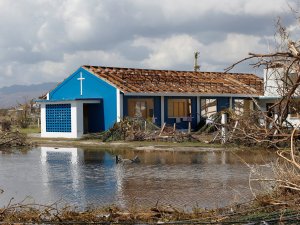 Haitian officials said on Thursday that at least 30 people had died and 20 were still missing. The poor country wasn't directly affected, but the storm brought days of heavy rain. According to the Reuters news agency, Jamaica has reported 19 deaths. Before the hurricane hit land in other places, the Dominican Republic said there was one death.
Haitian officials said on Thursday that at least 30 people had died and 20 were still missing. The poor country wasn't directly affected, but the storm brought days of heavy rain. According to the Reuters news agency, Jamaica has reported 19 deaths. Before the hurricane hit land in other places, the Dominican Republic said there was one death.Melissa, one of the strongest hurricanes ever recorded in the Atlantic, hit Jamaica on Tuesday as a Category 5 hurricane with gusts that stayed at 295 kilometers per hour (183 miles per hour) at its highest. The hurricane didn't touch Kingston, the capital, but it did hit the western half of Jamaica, where it caused "devastation," according to government officials.
Later, Melissa hit Cuba as a Category 3 hurricane before moving on past the Bahamas on Wednesday night. The US National Hurricane Center says it will pass within 60 km (37 miles) of Bermuda.
The hurricane has caused damage across the Caribbean, with strong winds, rain, and flooding, even though its strength has been slowly dropping over the previous week.
Local reports say that both Haiti and the Dominican Republic, which share the island of Hispaniola, were not directly affected, but they both had a lot of flooding.
Reuters says that no deaths have been recorded in Cuba yet, but the eastern side of the island was hit hard by powerful winds.
The newswire stated that hundreds of thousands of people in the Caribbean still don't have power, including 70 percent of Jamaica's electrical users.
Regional officials are attempting to clear away fallen trees and electrical lines and figure out how much damage has been done to infrastructure across the board.
UN officials said they are still figuring out how much damage Melissa caused. However, Dennis Zulu, the UN Resident Coordinator, says that early reports from Jamaica show that the destruction is "never seen before" by the island.
On Thursday, the US State Department said that Secretary of State Marco Rubio has sent the US Disaster Assistance Response Team to help Jamaica, Haiti, the Bahamas, and Cuba.
AccuWeather, a US meteorological service, said that "preliminary damage and economic loss" from Melissa might be between $48 and $52 billion.